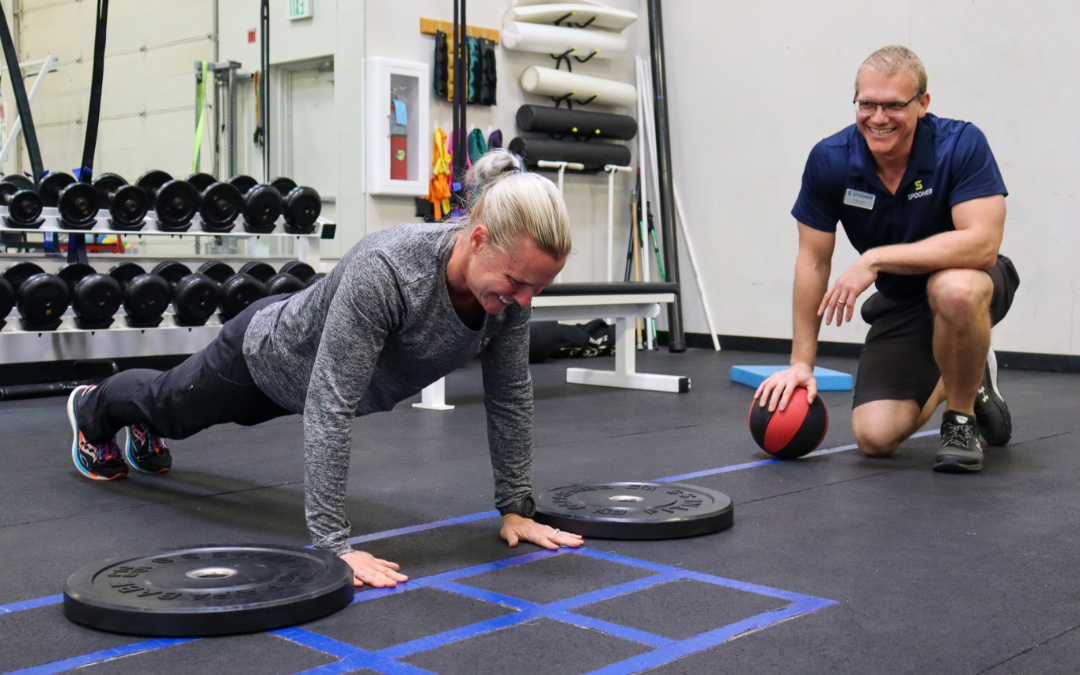Connective tissue health is not a common concern for fitness training goals, but it should be considered for longevity of training. Tendons, ligaments, and fascia are all connective tissues which are made of collagen, and collagen synthesis is the growth of those tissues. Connective tissue health, such as tendons, play a large role in injury prevention as well as performance. Focusing training time only on muscular development and sport practice can eventually lead to musculoskeletal imbalances that greatly increase the chance of injury.
Lifting at the gym, or resistance training, is a great way to stay healthy. However, with lifting, there is a tendency for weight lifters to focus on increasing muscle mass rather than strength gains. While growing muscle is fantastic and extremely healthy, focusing strictly on growth rather than true strength could cause imbalance, pain, and even injury later on. Focusing on strength and addressing the strength of your tendons and other connective tissues as well as your muscles sets you up for success in the gym, reduces the risk of injury, and improves sport performance.
The good news is that most resistance training is correlated to increasing tendon and connective tissue health. However, to increase tendon strength, there needs to be an individualistic approach to what type of exercises are dedicated to increase strength- not just muscle. To build tendon strength, eccentric overload, isometric, and plyometric training are three effective ways to program your workouts.
Eccentric Overload Training
Eccentric training is a common approach for building muscle and strength, however there are different approaches to both. Traditionally, eccentric exercises focus on controlling the lengthening of a muscle with resistance. This could mean controlling the lowering aspect of a squat or the extending of a bicep curl. Focusing and slowly moving through the eccentric movement of a motion creates microtears of the muscle tissue, which causes muscle growth.
For tendon strength, there needs to be significant overload on the intended joint for the eccentric portion of the exercise. More weight is needed on the eccentric rather than what you can lift in the shortening, or concentric, portion. This could look like utilizing machines in the gym like the flywheel, or bilateral assisted exercises, where we perform lifts like normal and then take away a limb for the eccentric portion. For example, doing a heel raise with both legs and then lowering with one is a great example of this and is great for strengthening the Achilles tendon.
Eccentric training has several benefits, read about them on 4 Benefits of Eccentric Exercise
Isometric Training
Isometric training is vital to building tendon strength as it promotes tendon stiffness. Now, you might be thinking that tendon stiffness is something that sounds like a bad thing, but it is actually what we are trying to achieve. Tendons attach muscles to bone, so stiffness aids in its ability to transmit force between the two. If the force between muscle and bone is better transmitted, you will be able to utilize that power better as an athlete.
A tendon that has greater resilience will also be at a lesser risk of mechanical failure. Think about the resistance bands at the gym. The stronger ones are more resistant to tears over time even with overuse. A few examples of isometric exercises are wall sits, heel raise holds, or split squat holds.
Plyometric Training
Plyometric exercises are activities which train the muscle to achieve maximal force in the shortest amount of time. This form of training involves quick and powerful movements by utilizing the elastic component of muscle tissues. Due to the amount of force, the joints undergo a fair amount of impact training, which causes the tendons and other connective tissues to adapt. Tendons learn through plyometric training to maximize force production and to be resilient to high-impact movements.
Because of the intensity of plyometrics, as with any form of resistance training, it is best to vary periods of training as it is only one part of an athlete’s overall training program. Some examples of typical plyometric exercises are box jumps, depth drops, and plyo push-ups.
Eccentric, isometric, and plyometric training are all effective ways to strengthen your tendons in different ways. Based on your desired goals or sport, focusing more on one may be beneficial. However, as with all things, we want to achieve a good balance between all types of training to reduce overload and training fatigue as these are higher intensity exercises. For athletes, it is better to program eccentrics as the majority of your exercise program in the offseason and focus on plyometrics in-season.
A Spooner FIT trainer can help program these exercises for you to maximize your strength and reduce risk of injury both in season and during the off-season. Schedule an appointment today.

